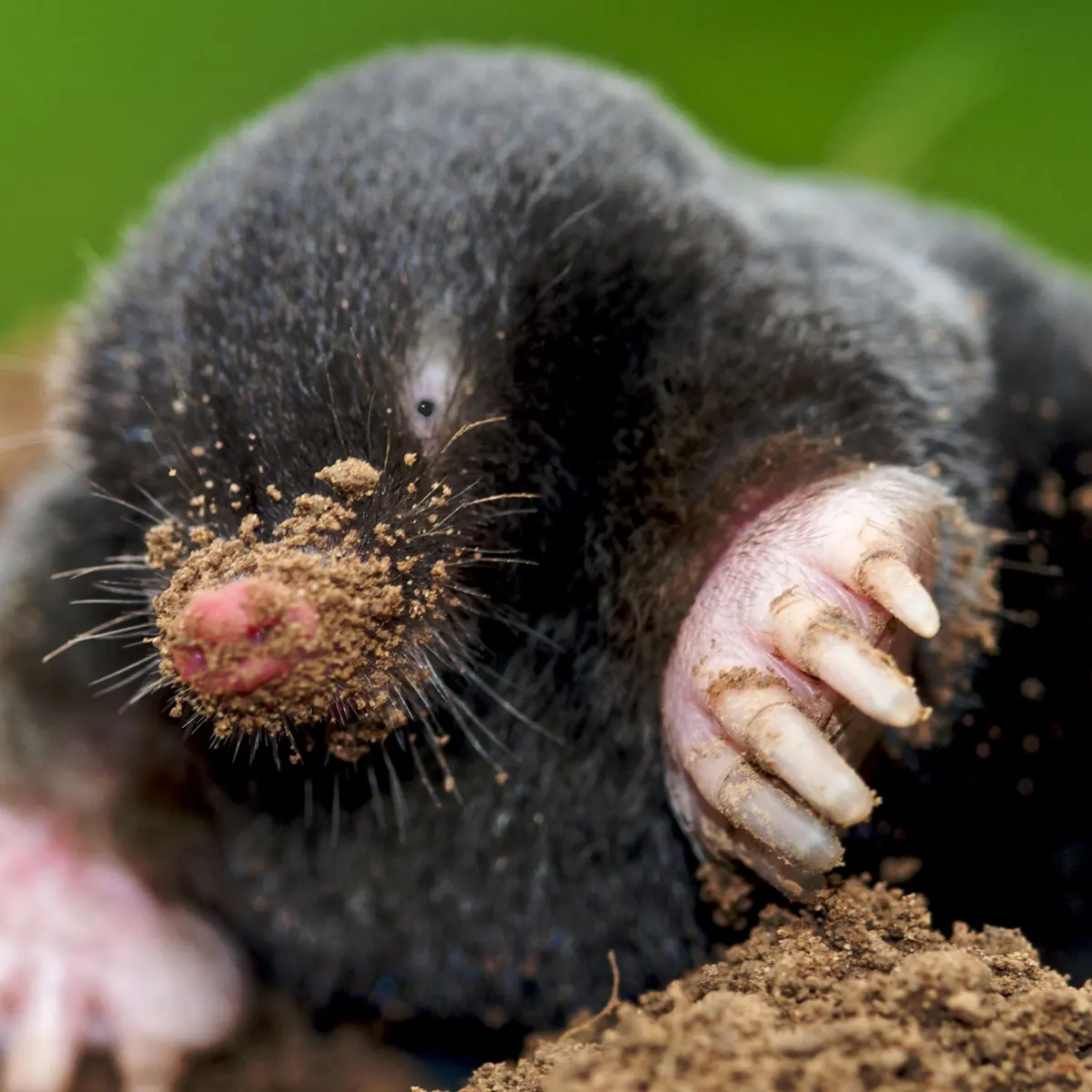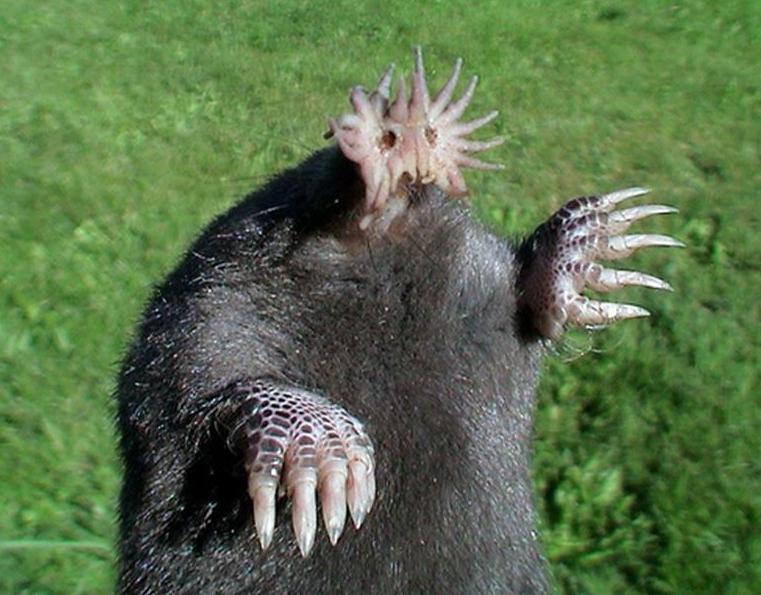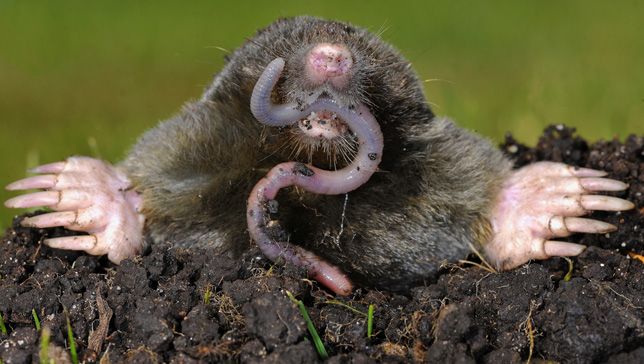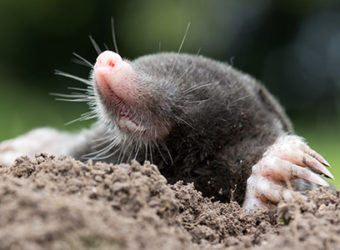Notes from Underground
I tripped over a mountain at Croton Point Park yesterday. A really tiny mountain.
It was the first time in a while that I’d nearly face-planted from such an encounter…but, alas, I’m sure I’ll be doing it again soon. Because these days every mowed lawn and other flat expanse in the park seems to be crisscrossed by miniature mountain ranges, and their number seems to grow every day.
What creates these annoying impediments to safe wandering? Anyone who’s ever had a yard probably already knows the answer: moles. Those busy little subterranean diggers that tunnel under our gardens, destroy the roots of our carefully planted flowers and vegetables, and turn our lawns into works of abstract art.
In my decades of wandering around, I’ve undoubtedly passed within a few feet of hundreds or even thousands of moles. But it wasn’t till I stumbled over that tiny mountain at Croton Point that I realized something: I don’t think I’ve ever actually seen a living one in the wild.
That fact—a lifetime’s proximity, no direct proof that the animal exists—surprised and intrigued me. So I decided to do a deep dive and find out more about these odd, annoying, and mysterious creatures that scuttle around under our feet. What I learned surprised and fascinated me.
True moles are found across much of North America, Europe, and Asia. (The golden moles of southern Africa and the marsupial moles of Australia are not closely related to them or each other, having evolved the same look and behaviors separately.)

Seven species are found in North America, including three that live here in New York: the Hairy-tailed, Star-nosed, and the ones likely building the tiny mountain ranges beneath my feet, the Eastern Mole. (The term “Eastern” is relative, as the species is found as far west as Colorado.)
Unsurprisingly, moles’ physical appearance reflects the demands and requirements of the niche they’ve evolved to fill. Contrary to some popular beliefs, they are not blind. All moles have working eyes (though often concealed behind fur), and while they’re thought to be colorblind and quite nearsighted, many are actually quite good at recognizing subtle shifts in light. Similarly, though their ears are usually tiny and completely hidden by fur, moles’ sense of hearing is acute. As is their sense of smell.

Moles’ fur is thick and velvety, making it resistant to getting clogged with dirt or mud. Their hindlimbs are small, but their forelimbs are large and muscular, ending with large paws resembling human hands that are tipped with powerful claws ideally suited to digging.
At first glance it appears that moles have six fingers, exceeding the number of digits found anywhere else in the animal kingdom. But it turns out that the sixth finger is actually a modified wrist bone. It’s another evolutionary quirk that has helped moles survive and become superstar excavators since the Late Eocene Period (37–33 million years ago), when Eotalpa anglica, the “Dawn Mole” first evolved from shrewlike ancestors.

Having learned about mole bodies and evolution, I was interested in finding the answers to some puzzling questions. For example: How do they survive in a virtually airless underground environment? And exactly what it is that they’re doing down there all day, besides building speed bumps for unwary passersby?
It turns out, as it does so often, that the answers are more complex than I’d ever expected. Eastern Moles can thrive down below because they’re ideally suited to their niche. Like all mammals, they take in oxygen and breathe out carbon dioxide (CO2), but they’ve evolved the ability to tolerate high CO2 levels (higher than any other mammal) via specialized red blood cells.
In addition, mole hemoglobin (the protein in the red blood cells that carries the oxygen all mammals need to survive) is extraordinarily good at taking in and utilizing the oxygen that does exist in their tunnels. This means that the animals can repeatedly breathe in the same air they’ve breathed out without becoming light-headed, passing out, and eventually dying of asphyxiation.

And what’s the story with the tunnels crisscrossing the lawns and fields, the ones that create those minuscule mountain ranges? Turns out that their main purpose is not for transit between one burrow and other, as I’d assumed. They’re actually earthworm traps.
Moles will eat most kinds of grubs, ants, and other bugs they encounter, along with a little plant material. (When they destroy your garden it’s usually because they’ve cut away the roots to clear their passageways, not to eat them.) But what they love most is earthworms—and they sure need to find a lot of them. An adult Eastern Mole may eat 20 or more worms in a day, consuming more than half its own weight daily.
That’s where the tunnels come in. They create an unexpected underground opening that earthworms fall into when they’re moving through the soil. When a worm tumbles into a tunnel, the resident mole—relying on its excellent hearing—comes racing down the passageway to gobble it up.

How quickly do hunting moles identify and consume a worm? They’re all remarkably fast, but when it comes to the Star-nosed Mole (a resident of eastern North America), the answer to the question is hard to believe. Having approached a potential meal, the mole uses its extraordinary star (which is made up of 27 stunningly sensitive sensory appendages known as Eimer’s organs) to decide if it’s edible. This process takes…8 milliseconds. That’s eight thousandths of a second.
Once identified, the snack goes down the mole’s gullet in as little as 120 milliseconds, or a bit more than a tenth of a second. Unsurprisingly, Star-nosed moles are considered the fastest eaters of any species on earth, and other moles are almost equally efficient.
In fact, “efficiency” might be the most accurate buzzword for moles as a whole. Surrounded by a buffet of tasty earthworms that pretty much fall into their laps and living in areas where few predators (except for an occasional weasel and snake) can reach them, they can go about their business with little to complain about.
Well, they probably don’t appreciate my clumsy feet collapsing sections of their tunnels. But I doubt it bothers them much, either. They’ll just use their powerful front legs and extra thumbs to excavate a new one.
After all, moles have lived beneath the feet of far bigger, more powerful creatures for millions of years. And here they are beneath ours, usually invisible to us but always near at hand. By now, I imagine they must take clumsy humans like me in stride.
Copyright © 2023 by Joseph Wallace
